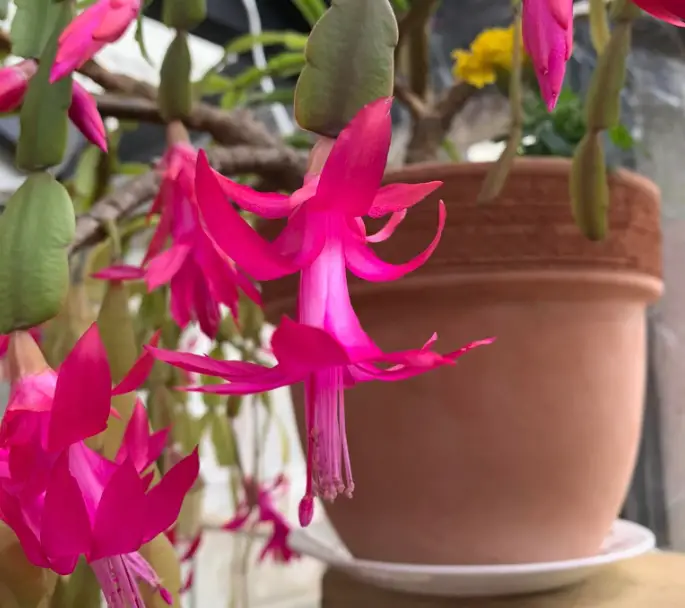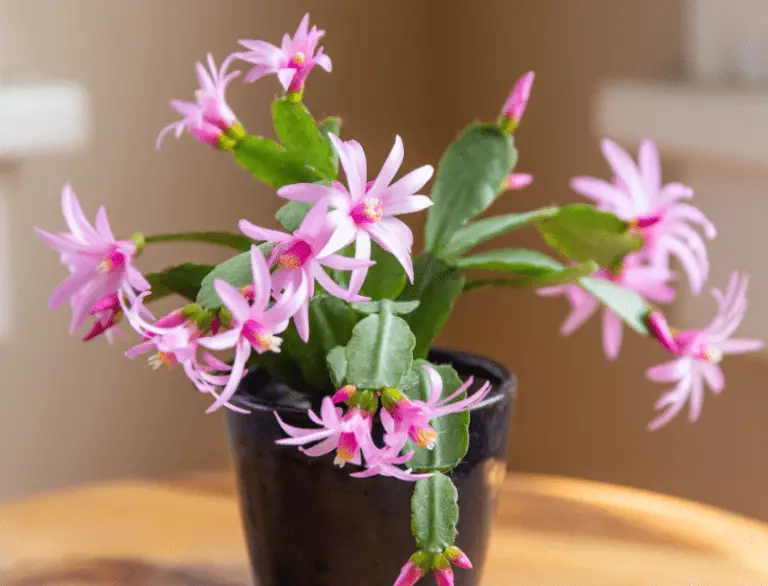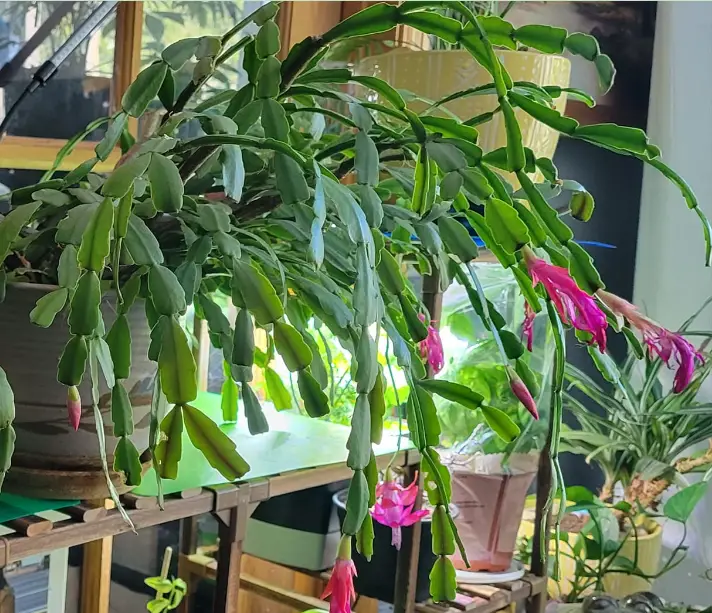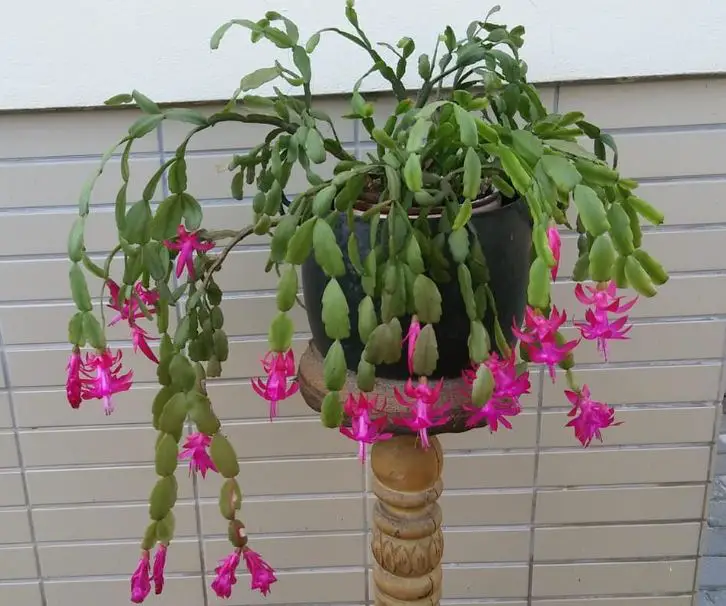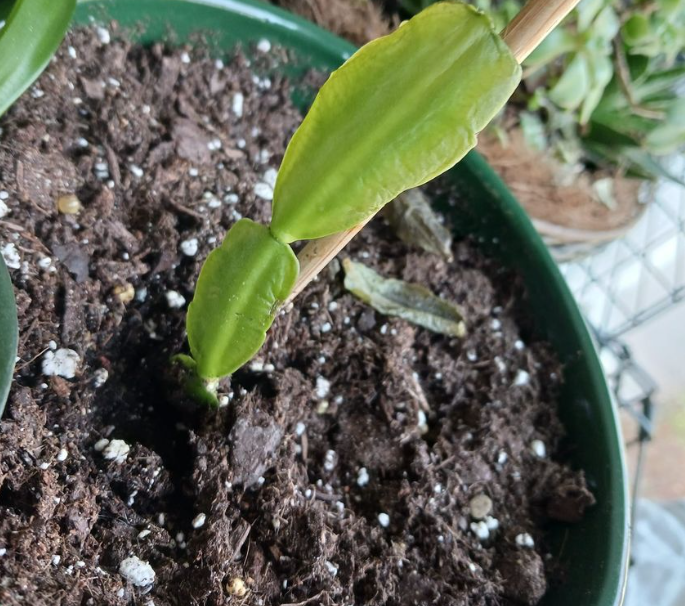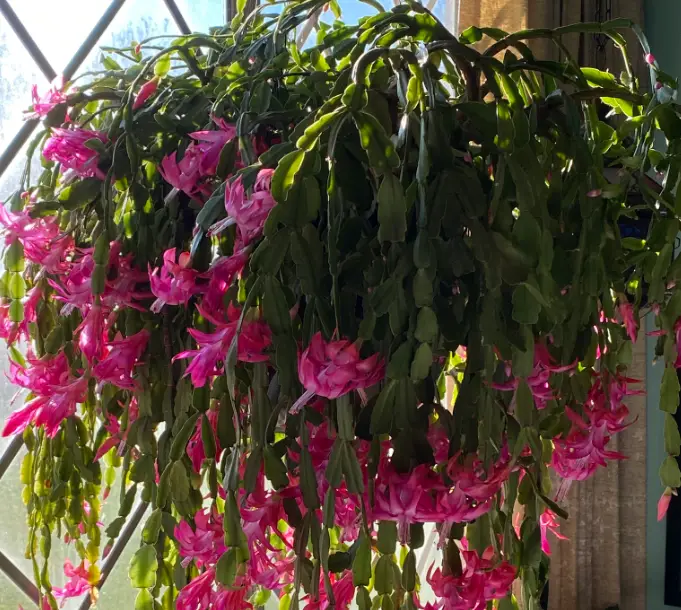How to Take Care of a Christmas Cactus Indoors
Christmas cactus is a long-lived houseplant that can be handed down to many generations. Under proper care, it will keep rewarding with beautiful flowers year after year. Knowing that a Christmas cactus can live up to 50 years or more is very satisfying.
Indoor care requirements for a Christmas cactus aren’t demanding. You need to provide bright indirect light, water it when the top inch of the soil is dry, and fertilize it during the growing season in spring and summer.
The Thanksgiving, Christmas, and Easter Cactuses are tropical plants native to the rainforest of Brazil. They grow as epiphytes on rocks and branches of trees where decomposed tree leaves and mosses act as their soil.
Cultivating holiday cacti plants indoors can be difficult without mimicking these conditions.
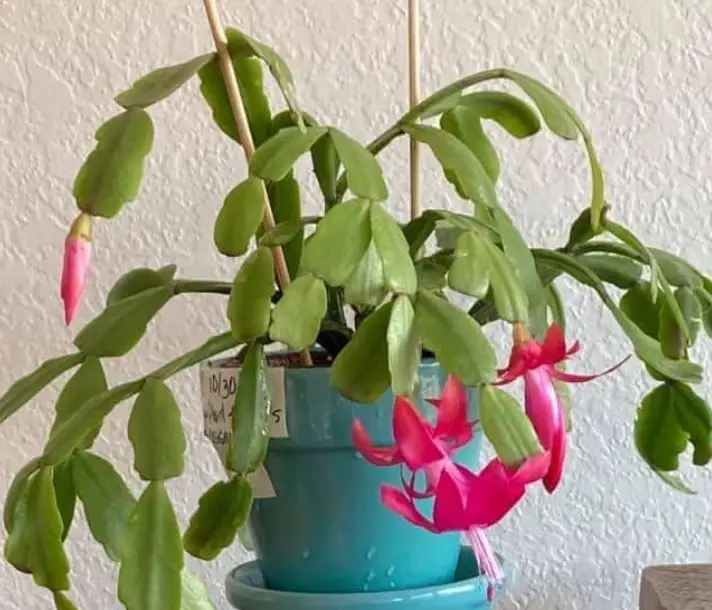
Christmas cactus care indoors
If you just purchased your Christmas cactus that is already budded or flowering, you need to take it to a brighter spot away from direct sunlight, preferably near a north or east-facing window.
Christmas cactus loves consistently moist soil, so water it regularly but not excessively. It’s important to stay on the drier side of the soil. An overwatered Christmas cactus will likely wilt and die due to root rot. Less watering is needed during winter.
This holiday cactus prefers moderate temperatures around 60-70°F (15-21°C) during the growing season (spring and summer) and cooler temperatures between 50-55°F (10-13°C) during the dormancy period (fall and winter)
If you intend to grow a bigger Christmas cactus, here is a simple season-to-season care regime you need to follow.
Spring (April to June)
When winter is over, a Christmas cactus will enter a growth period as spring starts. New shoots will be seen sprouting at the tip of each stem. Prune your Christmas cactus to remove dead flowers and a few older stems to encourage growth.
You may propagate the stem cuttings to get more new plants to gift or add to your collection. This is also the best time to repot your Christmas cactus if needed. Be sure to use well-draining soil and a pot with drainage holes.
You should also start fertilizing the Christmas cactus monthly from when new growth starts in spring to the end of summer. Apply a well-balanced half-strength, diluted liquid houseplant fertilizer every 2 to 4 weeks.
Additionally, fertilize with Epsom salt (magnesium sulfate) diluted at 1 teaspoon per gallon of water once per month but not on the same week as regular fertilizer.
Summer (July to August)
Summer is characterized by warm air and bright sunlight. You can take your Christmas cactus outdoors but keep it in a shady area away from direct sunlight. Hang the cactus plant under trees or on your porch to prevent sunburn.
As we approach the end of summer, stop fertilizing and cut back on watering. Allow the soil to dry thoroughly between watering but without allowing the plant to shrivel. This puts the Christmas cactus into dormancy, a very important period before blooming.
Fall (September to October)
Fall is regarded as the budding period for a Christmas cactus. Currently, the plant has stored enough sugars and energy required for blooming. You only need to encourage your Christmas cactus to bloom by placing it in uninterrupted darkness for 12 to 14 hours daily for six to eight weeks.
As flower buds start forming, gently increase watering and place the plant in a cool bright place. Mist the plant with room temperature water when the air gets dry. This helps increase humidity around it.
Once the buds are set, keep the temperature consistently cool, and they will gradually open into flowers. Additionally, keep the plant away from cold drafts and heat to prevent flower buds from falling off.
Christmas cactus problems and solutions
The following are common problems in holiday cactuses and their solutions:
Buds falling off
Moving the budding plant too much, heat and insufficient moisture are the main causes of this problem. The solution is to mist the plant with water when the soil and air are dry and keep it away from heating vents, open doors, and drafty windows.
Discoloration
This is a sign that roots are damaged due to overwatering or underwatering. Dark mushy roots are a sign of root rot. On the other hand, brittle roots are a sign of underwatering. Christmas cactus leaves turning purple or red is also a sign of sunburn.
Ensure you water your Christmas cactus regularly, but only when the top inch of the soil feels dry. Keep the plant away from direct sunlight and places with extreme temperatures.
Shriveling
This is a symptom of several issues, diseases, and other problems like underwatering, too much direct sunlight, excess heat, and low humidity. To fix the droopy or wrinkled Christmas cactus, you need to evaluate all the conditions around the plant and fix the underlying cause.
Stunted growth
This a nutritional problem usually caused by improper fertilizing or the inability of roots to absorb nutrients due to overcrowding. Repotting a Christmas cactus in a fresh soil mix is the perfect solution to this problem. Be sure to use a slightly bigger pot than the current one.
Not blooming
It’s common for a Christmas cactus not to bloom. This usually happens when the blooming conditions aren’t met. To get a Christmas cactus to bloom, cut back on fertilizing and watering during fall, and keep the cactus in darkness for 12 – 14 hours per day for 6 to 8 weeks.
Pests and diseases
This is a rare problem in the Christmas cactus. However, mealybugs and other pest insects may damage the stems as they such sap. They are the main reasons for unusual spots on the Christmas cactus. Regularly inspect your houseplants for pests and treat them as needed.
Final Thought
Christmas cactus is one of the easy-to-care-for houseplants. This succulent has few requirements for watering, fertilizing, and pest control. Simply water it less, fertilize only during active growth and provide indirect bright light. Remember, less is more for a Christmas cactus.
References
- The University of Minnesota Extension: Holiday Cacti
- Clemson University Cooperative Extension: THANKSGIVING & CHRISTMAS CACTI
My name is Diane M Lewik, and I am the founder of this website. I am a degree holder in plant biology from the University of California – Berkeley. Over the years, I have cultivated a vast collection of succulents and I have learned a great deal about how to grow and care for these unique plants. Feel free to ask any questions in the comment section below.
